Every hurricane has potentially deadly winds, but only those with a Category 3 or higher rating are considered major storms. The sheer force of the winds produced by major hurricanes can cause extensive destruction, including demolished buildings and fatalities. A look back at the most devastating hurricanes to hit the United States in the 1970s is the focus of this article. Hurricanes of category 3 or higher will be our primary focus, though we will investigate any storms that caused major damage or loss of life. Our attention will be narrowed to hurricanes in the Atlantic that made landfall in the United States. Although hurricanes do develop in the Pacific Ocean, unlike the Atlantic, none of these cyclones ever make landfall on the United States continental coast. Okay, so let’s begin!
1970
Hurricane Celia
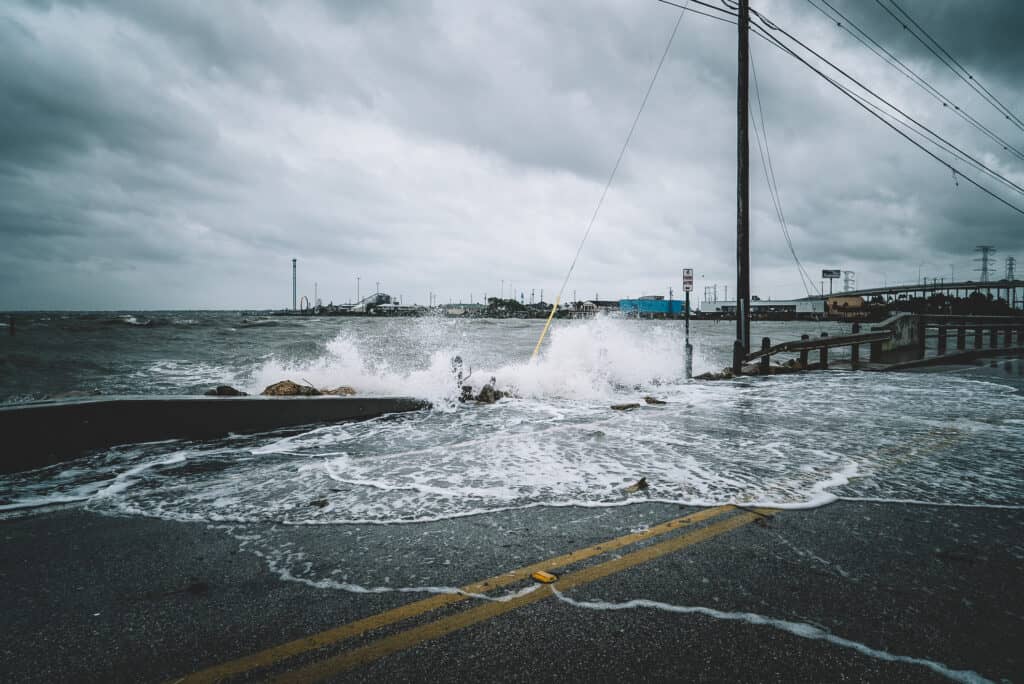
Hurricane Celia was one of the biggest hurricanes in the United States in the 1970s.
©iStock.com/Eric Overton
Celia, a Category 4 hurricane that hit South Texas in early August, was the most devastating storm of the season. Damage from Hurricane Celia was over $930 million, making it the biggest hurricane to hit Texas before Hurricane Alicia in 1983. A total of 28 people lost their lives: 4 in Cuba, 8 in Florida, and 16 in Texas.
1971
Hurricane Edith
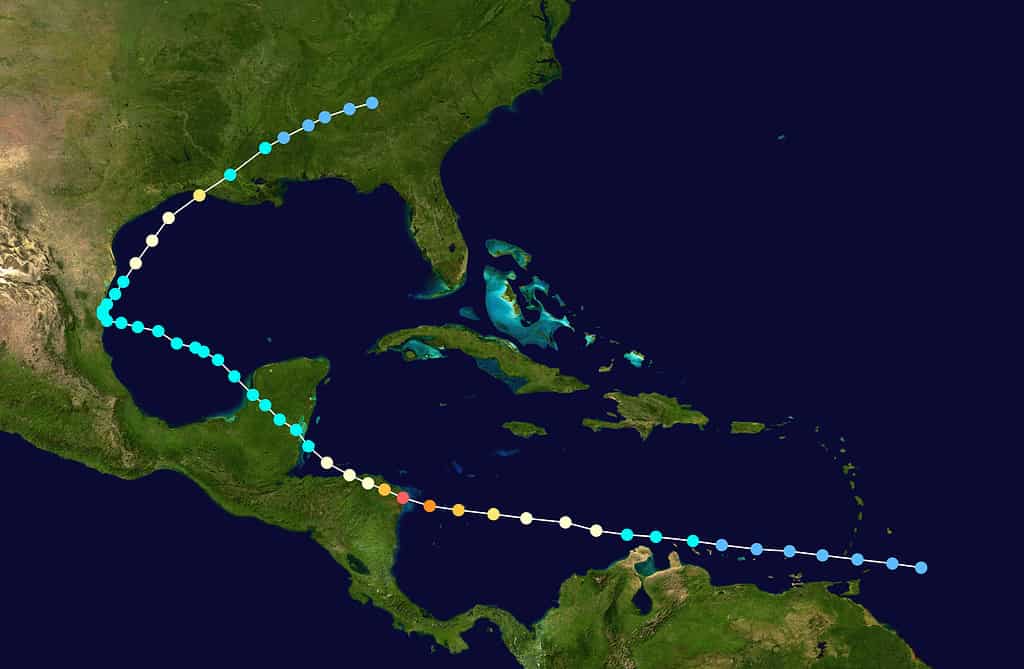
Track map of Hurricane Edith, which was a Category 5.
©BananaIAm, Supportstorm, Public Domain – License
Multiple significant hurricanes formed in the Atlantic during the 1971 hurricane season. The most powerful storm of the season, Hurricane Edith, registered as Category 5, the highest category on the scale while being the least intense storm ever recorded for that category. Edith, having crossed the Gulf of Mexico and having regained power while speeding towards the shore, made landfall in Louisiana on September 16 with winds of 105 mph (170 km/h). On the 18th of September, Edith finally dissipated over Georgia after gradually weakening over land. Near Aruba, two individuals were killed by the hurricane. Edith, which hit northeastern Central America as a Category 5 hurricane, killed at least 35 people and destroyed hundreds of buildings.
1972
Hurricane Agnes
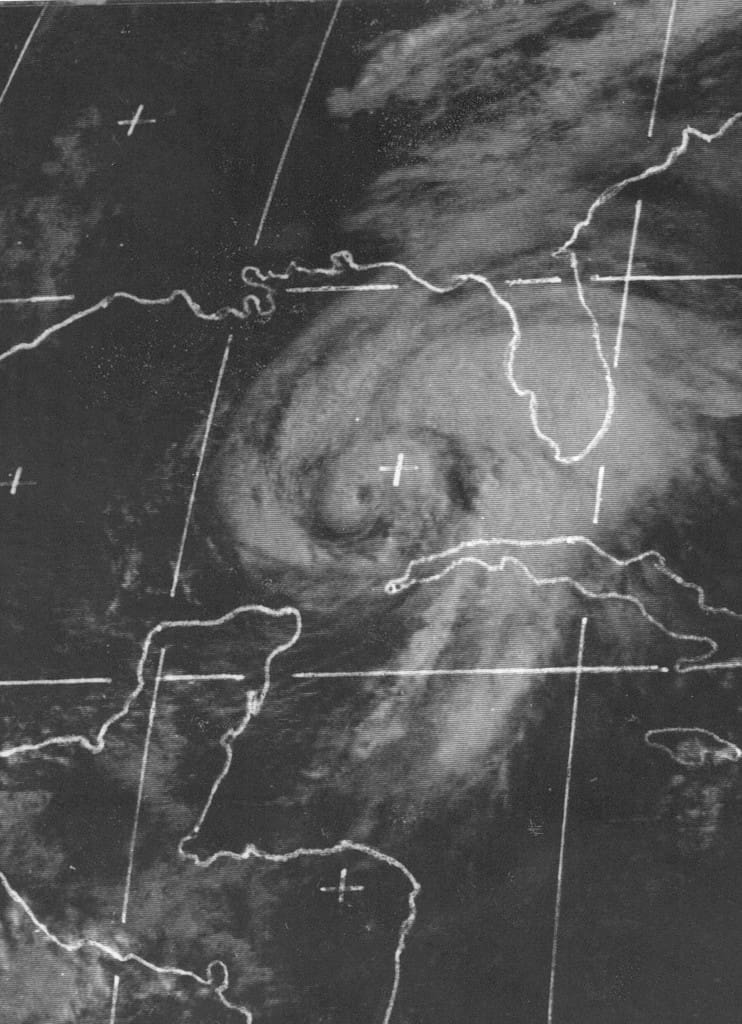
©National Oceanic and Atmospheric Administration (NOAA), Public domain, via Wikimedia Commons – License
There were just seven named storms in the Atlantic during the 1972 hurricane season, with only four becoming full-fledged tropical storms (the fewest since 1930) and three becoming subtropical storms. Of the hurricanes that have occurred, only Agnes deserves special consideration. Damage and fatalities from this category 1 hurricane greatly outpaced those from any other hurricanes or tropical storms that year. After Hurricane Katrina, Hurricane Agnes caused the most damage to the United States, an estimated $2.1 billion. There were 128 fatalities due to the hurricane. Agnes had far-reaching consequences, impacting a large swath of the United States’ east coast and beyond.
1973
Hurricane Ellen
Category 3 cyclone Hurricane Ellen, which stayed over open water, was the strongest storm of the season. In terms of meteorology, the last named storm was noteworthy since it was the first tropical cyclone on record to weaken into a subtropical cyclone. It generated gusts of wind up to 115 mph. To everyone’s relief, no lives were lost, and only minor damage was incurred.
1974
Hurricane Carmen
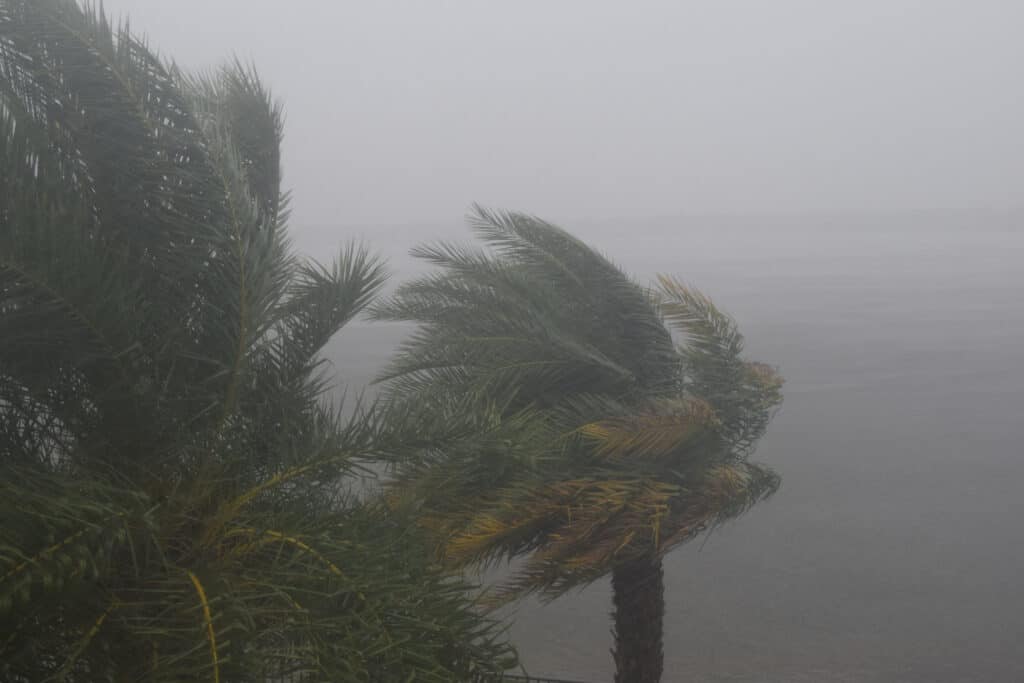
Hurricane Carmen was a destructive storm that took lives and caused widespread damage.
©LouiesWorld1/Shutterstock.com
Hurricane Carmen, the strongest storm of the season (Category 4), caused widespread damage in the Yucatán Peninsula and moderate damage in Louisiana before weakening. It killed a total of 8 people in its wake. Most of the deaths and damage from Carmen occurred in Louisiana and cost an estimated $162 million in damage.
1975
Hurricane Eloise
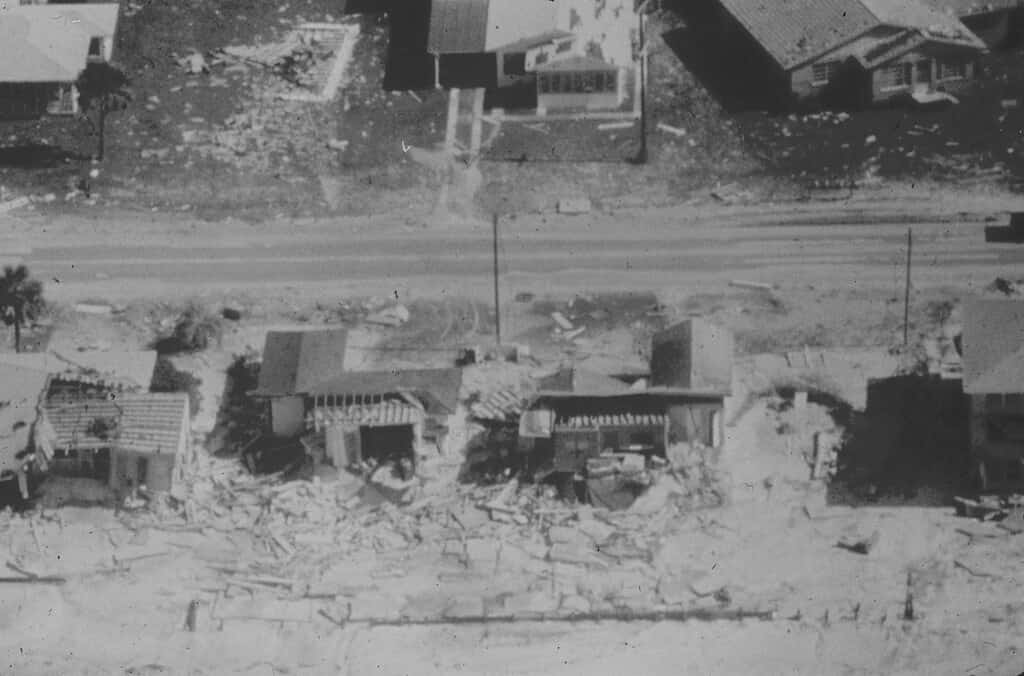
The cyclone rapidly intensified in the Gulf of Mexico, reaching Category 3 status on September 23.
©NOAA Photo Library, Public domain, via Wikimedia Commons – License
A total of about $560 million worth of damage was caused by storm Eloise in the United States. The cyclone rapidly intensified in the Gulf of Mexico, reaching Category 3 status on September 23. Landing to the west of Panama City in Florida, the hurricane then moved inland across Alabama before dissipating on September 24. Numerous buildings, piers, and coastal constructions were destroyed when Eloise reached Florida with winds of up to 155 miles per hour.
Damage from the windstorm reached into the interior of Alabama and Georgia. North of here, extraordinary and widespread flooding was caused by heavy rainfall all along the East Coast of the United States, with the Mid-Atlantic region being hit particularly hard. The post-tropical storm caused freshwater flooding, killing an additional 17 people in the area and causing infrastructure and geological damage on par with that caused by Hurricane Agnes three years earlier. Hurricane Eloise took the lives of eighty people in total.
1976
Hurricane Belle

Hurricane Belle was near peak intensity on August 8, shown here.
©Roch19571, CC BY-SA 4.0 – License
Hurricane Belle, which peaked as a Category 3 system east of North Carolina, was the most powerful storm of the season. Later, as a Category 1 hurricane, Belle hit Long Island, New York, wreaking $100 million in damage and killing 12 people in the Carolinas, New England, and Canada’s New Brunswick.
1977
Hurricane Babe
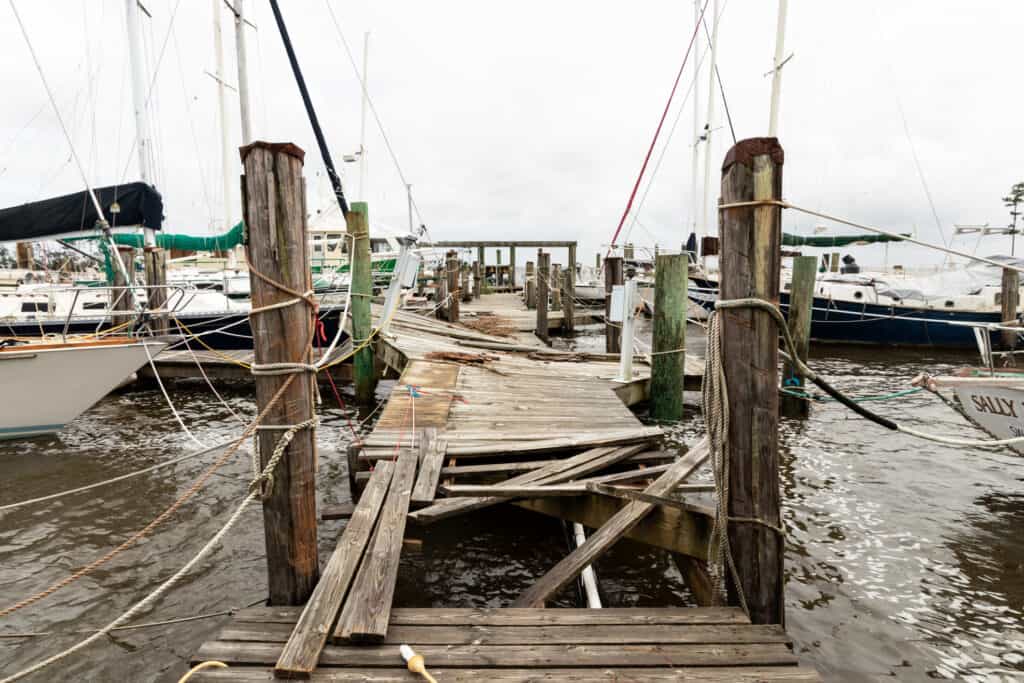
Hurricane Babe caused some structural damage but no fatalities.
©iStock.com/Eifel Kreutz
During the relatively quiet Atlantic hurricane season of 1977, Hurricane Babe was the only storm to make landfall in the United States. Wherever it went across the United States, Hurricane Babe left behind just minor damage. The storm had the greatest impact in Louisiana, where it cost $10 million in damage, much of it due to agricultural losses. Tornadoes produced by Babe caused an additional $3 million in damages.
North Carolina received 8.99 inches (228 millimeters) of rain, with most areas experiencing flash floods but relatively little structural damage. Despite widespread fears, the hurricane ended up having no fatalities. Hurricane Babe coincided with the existence of a typhoon with the same name. For the entire year, this hurricane was the only one to wreak such widespread destruction in the United States.
1978
Hurricane Amelia
While this didn’t develop into a hurricane, Tropical Storm Amelia still brought intense weather to the area.
©NOAA, Public domain, via Wikimedia Commons – License
Short-lived Tropical Storm Amelia (not nearly category 1) dumped as much as 48 inches of rain on Texas between the end of July and the beginning of August, causing widespread flooding. There were 33 fatalities, and the damage was estimated at $110 million (or $349.4 million in 2020 dollars). Though it wasn’t the strongest hurricane of the year, it was responsible for the most casualties and property loss. For example, Ella, a Category 4 hurricane, brought strong gusts and rip currents on the East Coast of the U.S. and Atlantic Canada, but left minimal damage. There was minor damage to land from Hurricane Kendra as well. Tropical Storm Cora brought minimal damage to land but was responsible for one death.
Fun Fact: The last time a female-only naming list was used for Atlantic hurricanes was the 1978 season.
1979
Hurricane David

Hurricane David made landfall on the East Coast of the United States after passing through the Leeward Islands and the Greater Antilles in late August and early September.
©National Aeronautics and Space Administration (NOAA), data superimposed by CooperScience, Public domain, via Wikimedia Commons – License
Category 5 Hurricane David made landfall in the Dominican Republic in August 1979, causing catastrophic damage and killing hundreds of people in the process. When it came to Atlantic hurricanes, David was the first massive storm of 1979. It made landfall on the East Coast of the United States after passing through the Leeward Islands and the Greater Antilles in late August and early September.
Tornado David, with sustained winds of 175 mph, was responsible for the deaths of almost 2,000 people. The cost of repairs for the damage caused by David in the United States was estimated at $320 million. Four hundred thousand individuals left coastal areas before the hurricane hit. David was responsible for five deaths in the United States and indirectly responsible for ten deaths.
Hurricane Frederick

This is the old Dauphin Island Bridge destroyed by Hurricane Frederic.
©Fredericbrpic, Public Domain – License
The United States Gulf Coast was particularly hard hit by Hurricane Frederic, which was a strong and destructive tropical cyclone that wreaked havoc from the Lesser Antilles to Quebec. Only Frederic killed five people directly, but the storm caused $1.77 billion in damage, making it the costliest tropical cyclone in the history of the Atlantic basin.
In Conclusion
It is now abundantly evident from this article that the category of the storm is not necessarily indicative of the level of destruction or loss of life. How devastating a hurricane or tropical storm will depend on a number of things. This includes the amount of rainwater and wind, as well as the terrain and buildings it encounters. Therefore, it’s critical to be fully prepared before a tropical storm hits.
Summary of the Biggest Hurricanes of the 1970s in the U.S.
| Hurricane | Year | |
|---|---|---|
| 1 | Hurricane Celia | 1970 |
| 2 | Hurricane Edith | 1971 |
| 3 | Hurricane Agnes | 1972 |
| 4 | Hurricane Ellen | 1973 |
| 5 | Hurricane Carmen | 1974 |
| 6 | Hurricane Eloise | 1975 |
| 7 | Hurricane Belle | 1976 |
| 8 | Hurricane Babe | 1977 |
| 9 | Hurricane Amelia | 1978 |
| 10 | Hurricane David | 1979 |
| 11 | Hurricane Frederick | 1979 |
The photo featured at the top of this post is © lavizzara/Shutterstock.com
Sources
- Wikipedia, Available here: https://en.wikipedia.org/wiki/List_of_United_States_hurricanes
- Wikipedia, Available here: https://en.wikipedia.org/wiki/List_of_Atlantic_hurricane_records
- Wikipedia, Available here: https://en.wikipedia.org/wiki/Atlantic_hurricane
Thank you for reading! Have some feedback for us? Contact the AZ Animals editorial team.







